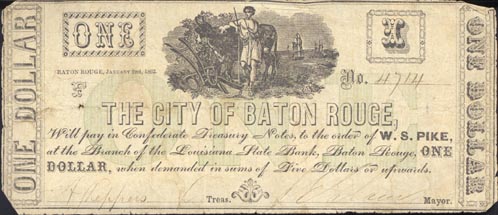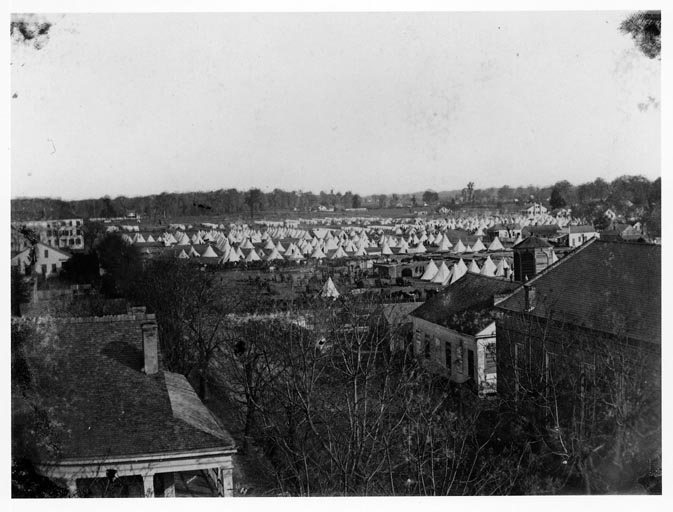
Exhibit Case 3: Civil War and Aftermath
Interpretive Text:
By May 1862 the Pentagon barracks and arsenal had changed hands again without resistance. Commander James S. Palmer of the Federal gunboat Iroquois raised the U.S. flag over the city. Six Federal infantry regiments, two artillery batteries, and a cavalry troop occupied Baton Rouge. An attempt by Confederates to retake Baton Rouge in August 1862 led to devastation in the city. Gunfire from both sides caused inhabitants (such as young Sarah Morgan's family) to flee. While Union soldiers raided the city houses, fleeing citizens raided their neighbors in the countryside. The Federals withdrew, only to return in December. They would stay in Baton Rouge until the end of Reconstruction in April 1877. As they did elsewhere in the South, the Civil War and Reconstruction left Baton Rouge with a legacy of social, economic, and moral impoverishment.
Union troops stationed in the city wrote letters to loved ones outside Louisiana, attempting to explain the rather "foreign land" they found themselves in. Writing in April, one anonymous Yankee commented that it was "one of these pretty cool July dayes when you see hens going round with thare toungs out[,] that is I mean in Maine[,] but there is a cool breeze."
William H. Tunnard enrolled at New Orleans on May 17, 1861 where he joined the 2nd Louisiana Infantry, Company K. He rose to the rank of sergeant. On July 4, 1863, he was captured at Vicksburg and paroled there four days later. He reappears on the rolls of Allen's Brigade Headquarters at Shreveport on March 29, 1864. We assume that he was once again captured because in April 1864 his name appears on a roll of prisoners for exchange at Natchitoches, and he is listed as paroled on June 7, 1865. Tunnard thereafter resided in Baton Rouge. These artifacts may have been made for him by a girlfriend, sister, or mother to carry with him in battle.
Andrew Lytle photographed both sides of the conflict. Some assert that he served as an agent for the Confederate Secret Service. Certainly he recorded practically every aspect of the war civilian hardships, troops and officers, military camps and installations, and gunboats on the Mississippi. The photographs by Lytle show Federal encampments. The officer in the rocking chair may be General Christopher C. Auger; the officer next to him may be Colonel Nathan Dudley. The second photograph, taken in 1862, is of the camp of the 7th Vermont and the 21st Indiana. The building to the right is the Presbyterian Church. Lytle took this picture from the top of the Heroman Building, located at the corner of Florida and Church Streets. The riding crop shown here belonged to Lytle.
Items Displayed:
Items listed below were part of the exhibition but some are not pictured on this page.
Sarah Morgan Dawson. The Civil War Diary of Sarah Morgan . Edited by Charles East. Athens, GA: University of Georgia Press, c1991. LLMVC E605 D28 1991.
Anonymous Civil War Letter, Baton Rouge, April 1863. LLMVC, Miscellaneous Collection.



Artifacts shown courtesy of the Louisiana State University Rural Life Museum, Baton Rouge, Louisiana: Embroidered cloth notebook cover, once belonging to W. H. Tunnard.
W. H. Tunnard's "housewife," presented to him by S. "Lou" Dyer, Woodville, Mississippi.
Andrew Lytle's riding crop.
Civil War-era belt buckles, "US" and "CSA."
Civil War-era cannon ball, cut in half.
